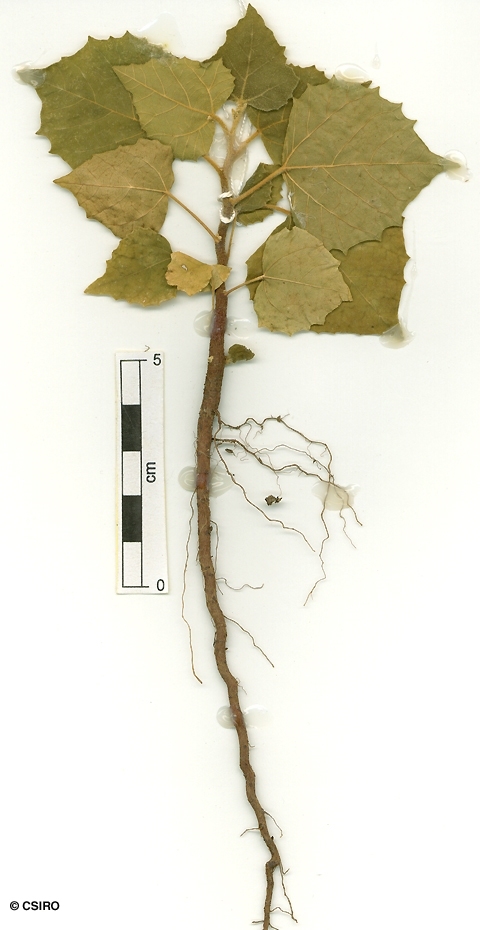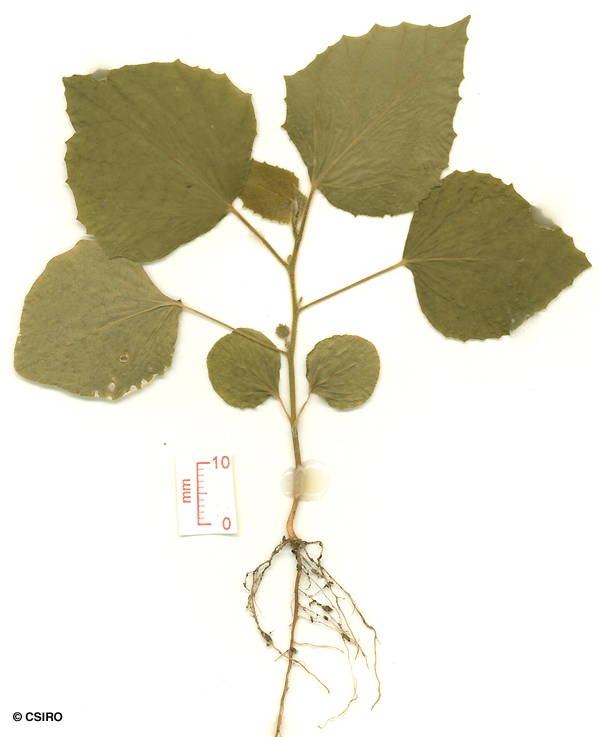Australian Tropical Rainforest Plants - Online edition
Mallotus nesophilus Mull.Arg.




Mueller Argoviensis, J. (1865) Linnaea 34: 196. Type: Qld, Sweers Is., Henne; lecto: MEL; iso: G-DC; Cape Flinders, 1819, A. Cunningham 295; Quail Is., 1855, Flood.
Yellow Ball Flower
A small tree. Hard brittle, pale brown inclusions present in the blaze.
Numerous small yellowish glands visible on the underside of the leaf blade with the aid of a lens. Numerous small oil dots visible with a lens. Small stellate hairs just visible on the twigs and underside of the leaf blade with the aid of a lens. Two flat or slightly depressed glands visible on the upper surface of the leaf blade at its junction with the petiole. Leaf blades about 5-14 x 3-11 cm, petioles about 5-11 cm long. Lateral vein 6-8 on each side of the midrib.
Cotyledons orbicular, about 12 mm diam., petiole relatively long and slender. At the tenth leaf stage: leaf blade triangular, margin serrate, upper surface clothed in simple and stellate hairs, lower surface clothed in simple hairs and pale yellow glands; petioles densely clothed in simple hairs and scattered yellow glands; stipules small and hairy. Seed germination time 21 days.





